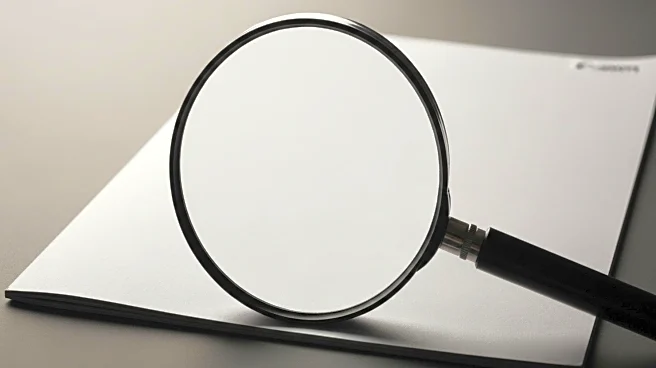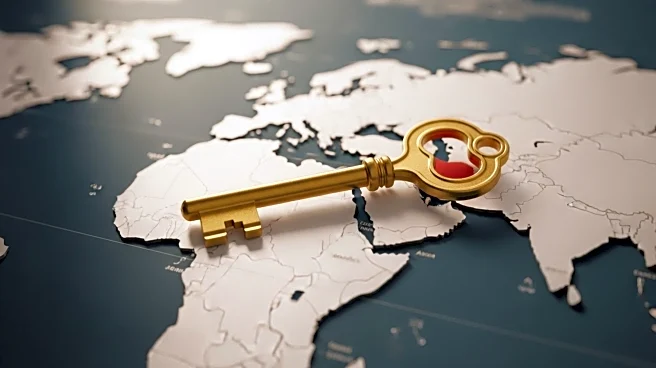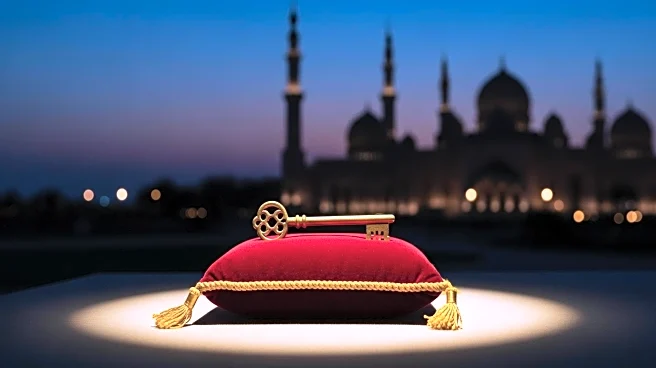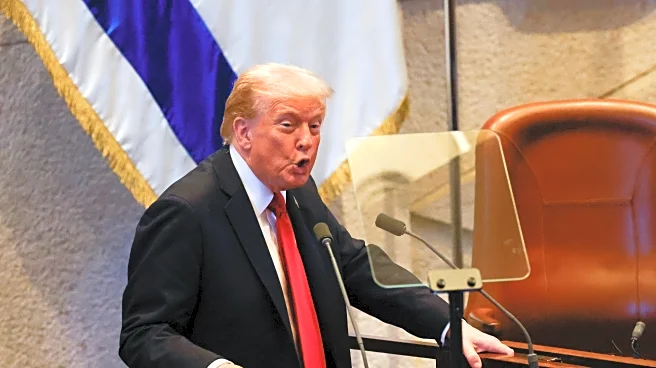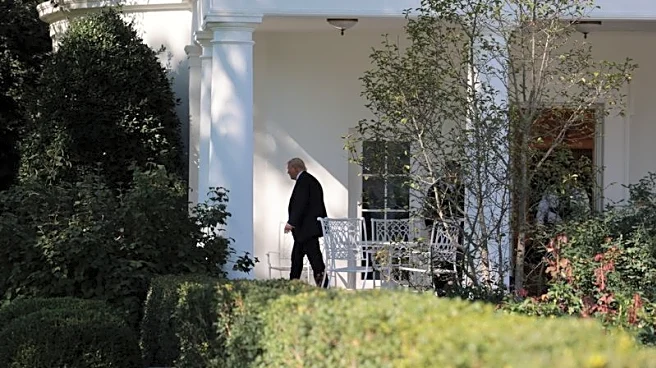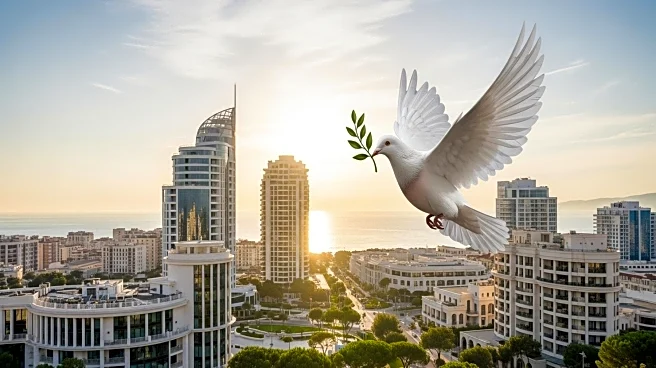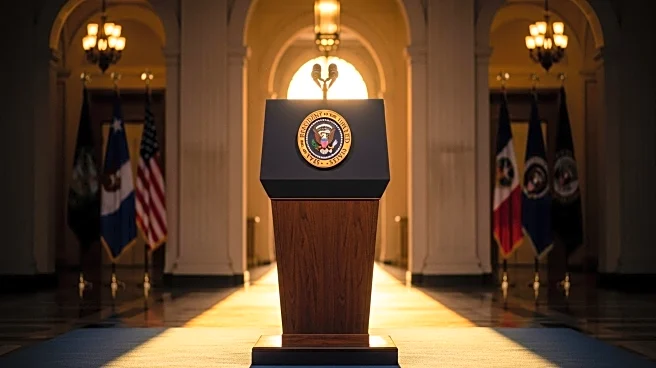What's Happening?
President Trump has expressed dissatisfaction with a recent Time Magazine cover that featured him following his diplomatic visit to the Middle East. The cover, which was intended to highlight his administration's efforts in securing a ceasefire deal in Gaza, depicted Trump in a manner he found unflattering. He took to his Truth Social platform to criticize the image, describing it as 'super bad' and claiming it was the 'Worst of All Time.' Despite his discontent with the photo, Trump acknowledged that the accompanying article was relatively positive, detailing the Trump administration's role in achieving the ceasefire, which could be a significant achievement of his second term. The article highlighted the efforts of envoy Steve Witkoff and advisor Jared Kushner in resolving one of the world's most destabilizing conflicts.
Why It's Important?
The Time Magazine cover and article come at a pivotal moment in President Trump's second term, as he seeks to solidify his legacy in international diplomacy. The ceasefire deal in Gaza represents a potential turning point in Middle Eastern politics, with implications for regional stability and U.S. foreign policy. Trump's reaction to the cover underscores the importance he places on media representation and public perception, which can influence his political capital and support base. The ceasefire, if successful, could enhance Trump's standing as a peacemaker, impacting U.S. relations with Israel and Egypt, and potentially reshaping the geopolitical landscape in the region.
What's Next?
President Trump is expected to return to Washington, D.C., where he plans to posthumously award the Presidential Medal of Freedom to the late conservative activist Charlie Kirk. This event, along with his continued diplomatic engagements, such as a meeting with Argentina's president, Javier Milei, will keep Trump in the public eye. The success of the Gaza ceasefire deal will likely be monitored closely by international stakeholders, and any developments could influence future U.S. diplomatic strategies in the Middle East.
Beyond the Headlines
The controversy over the Time Magazine cover highlights the ongoing tension between media portrayal and political figures, particularly in the context of President Trump's administration. This incident reflects broader issues of media influence on public perception and the role of journalism in shaping political narratives. Additionally, the ceasefire deal in Gaza could have long-term implications for peace efforts in the region, potentially serving as a model for conflict resolution in other areas.
